NYC Councilman Turns Food Waste to Food Rescue
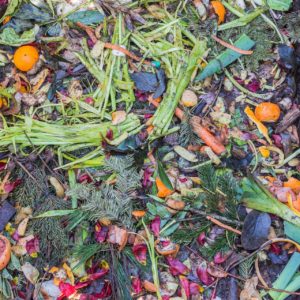 In April 2015, New York City announced it’s goal to achieve zero waste by 2030, reducing the 30 percent of our city’s waste which consists of food. In alignment with a number of other city-wide waste-reduction initiatives, NYC Councilman Rafael Espinal’s has introduced a bill which aims to help reach that goal by creating “a classifieds-style site where restaurants and supermarkets could advertise free leftovers to groups that feed the needy.”
In April 2015, New York City announced it’s goal to achieve zero waste by 2030, reducing the 30 percent of our city’s waste which consists of food. In alignment with a number of other city-wide waste-reduction initiatives, NYC Councilman Rafael Espinal’s has introduced a bill which aims to help reach that goal by creating “a classifieds-style site where restaurants and supermarkets could advertise free leftovers to groups that feed the needy.”
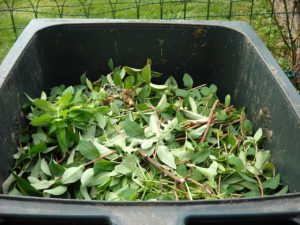 Food waste is a BIG issue, however, there are many ways individuals and households can affect change and, more specifically, reduce the amount of food which ends up in the landfill… That is to compost!! Civil Eats reports that, “in addition to food-scrap drop-off centers to collect residents’ compostable waste set up throughout the city, curbside composting is currently available to 270,000 households…” and now, businesses which generate large quantities of food waste—such as “hotels with more than 150 rooms, stadiums, food wholesalers with at least 20,000 square feet of space, and food manufacturers with at least 25,000 square feet of space” are required to separate out their organic waste for composting, or compost on-site with city approval.
Food waste is a BIG issue, however, there are many ways individuals and households can affect change and, more specifically, reduce the amount of food which ends up in the landfill… That is to compost!! Civil Eats reports that, “in addition to food-scrap drop-off centers to collect residents’ compostable waste set up throughout the city, curbside composting is currently available to 270,000 households…” and now, businesses which generate large quantities of food waste—such as “hotels with more than 150 rooms, stadiums, food wholesalers with at least 20,000 square feet of space, and food manufacturers with at least 25,000 square feet of space” are required to separate out their organic waste for composting, or compost on-site with city approval.
This is HUGE and it tells me that New York City is on the right track to tackling issues of food waste. Thank you New Yorkers!!
Big Hunger in NYC and Across our Nation
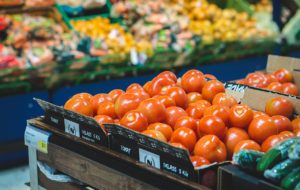 Unfortunately, even with the surplus of food ending up in the trash there are still many people who are classified as food insecure. According to the most recent figures from the U.S. Department of Agriculture, it is estimated that 13.1 million kids live in homes with insufficient food. And NPR also reports that the number of college students struggling with hunger has prompted more campuses to open food pantries. Sadly, seniors and people with disabilities suffer from hunger too and under President Trump’s proposed budget, federal money for programs like Meals on Wheels may face cuts which will surely exacerbate these issues. Working in our local communities, whether you organize, rally, or volunteer, together we can make a difference in people’s lives!
Unfortunately, even with the surplus of food ending up in the trash there are still many people who are classified as food insecure. According to the most recent figures from the U.S. Department of Agriculture, it is estimated that 13.1 million kids live in homes with insufficient food. And NPR also reports that the number of college students struggling with hunger has prompted more campuses to open food pantries. Sadly, seniors and people with disabilities suffer from hunger too and under President Trump’s proposed budget, federal money for programs like Meals on Wheels may face cuts which will surely exacerbate these issues. Working in our local communities, whether you organize, rally, or volunteer, together we can make a difference in people’s lives!
Changing School Food Systems to Better Serve Our Children and their Future
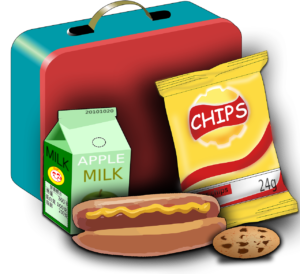 Celebrity Chef Tom Colicchi says, “The biggest lever for change is actually making foods more nutritious. We produce a lot of calories in this country — calories are cheap but nutrition is expensive. [We need] to try to figure out ways to make nutrition more affordable and accessible, especially for people who are struggling to feed themselves.” I’m in agreement with the Top Chef here, prompting schools and child development centers to work in what he calls ‘scratch cooking’ to feed kids wholesome and healthy meals, meanwhile teaching them proper nutrition and dietary needs, is the surest way to cultivate and improve public health.
Celebrity Chef Tom Colicchi says, “The biggest lever for change is actually making foods more nutritious. We produce a lot of calories in this country — calories are cheap but nutrition is expensive. [We need] to try to figure out ways to make nutrition more affordable and accessible, especially for people who are struggling to feed themselves.” I’m in agreement with the Top Chef here, prompting schools and child development centers to work in what he calls ‘scratch cooking’ to feed kids wholesome and healthy meals, meanwhile teaching them proper nutrition and dietary needs, is the surest way to cultivate and improve public health.
Earlier this month, State Sen. Michael Padilla introduced legislation in New Mexico aimed at helping students who can’t afford school lunches. The practice of shaming children to get their parents to pay has been in the news before, but now, the Hunger-Free Students’ Bill of Rights Act requires that all students have access to the same lunch.” –NPR, the Salt
Industrialization of Food Promotes Obesity and Malnutrition
 The industrialization and centralization of food production was done to increase farmers’ capacity to grow more food at a lower cost. Unfortunately, a core principle was lost in this efficiency equation — that of food quality and nutrient density.
The industrialization and centralization of food production was done to increase farmers’ capacity to grow more food at a lower cost. Unfortunately, a core principle was lost in this efficiency equation — that of food quality and nutrient density.
Today, we have ample amounts of “good-looking” foods, thanks to genetic engineering and agricultural chemicals. What you don’t see is the loss of nutrients. Tests reveal that the nutrient content of foods has dramatically declined since the introduction of mechanized farming in 1925.8
Is Your Organic Milk Really Organic??
The Washington Post investigates Aurora Organic Dairy’s massive Colorado complex, one of the country’s largest suppliers of organic milk, finding that the company’s milk may not be as organic as it promises. Watch this video to see for yourself the truth behind their cows’ feedlot conditions and to hear Virginia Tech’s lab technicians discuss the test results which indicate less grass-grazing is happening than the organic standards require. We need to expose these corporate lies and demand that companies like these comply with public policy and inspection rules!
Bronx Community Bans Sugary Drinks
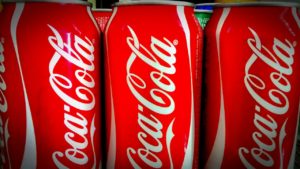 Last month, Bronx community health leaders launched the Bronx Healthy Beverage Zone (HBZ); a borough-wide movement that promotes healthy beverages among individuals who work, live, and visit the Bronx. Businesses partnered with health leaders to ban sugary drinks and encourage organizations and institutions to take the HBZ Pledge in order to “become role models for their community by restricting consumption of sugar-sweetened beverages and increasing water intake.” An official Healthy Beverage Zone toolkit is forthcoming, and the initiative will soon launch a website to keep initiative partners informed, connected and inspired.
Last month, Bronx community health leaders launched the Bronx Healthy Beverage Zone (HBZ); a borough-wide movement that promotes healthy beverages among individuals who work, live, and visit the Bronx. Businesses partnered with health leaders to ban sugary drinks and encourage organizations and institutions to take the HBZ Pledge in order to “become role models for their community by restricting consumption of sugar-sweetened beverages and increasing water intake.” An official Healthy Beverage Zone toolkit is forthcoming, and the initiative will soon launch a website to keep initiative partners informed, connected and inspired.
Organizations in the Bronx can support the initiative by taking the pledge for a sugar sweetened beverage free zone. For more information, visit the Healthy Beverage Zone Facebook Page.
One More for the Movie List
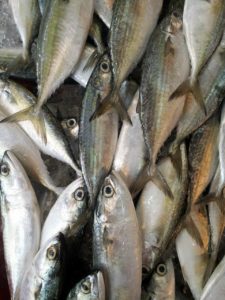 If you know people who still eat fish then hopefully they’ve considered what or where their fish comes from, that is, possibly how it’s farmed. The documentary Fish on My Plate is based on New York Times bestselling author and avid fisherman Paul Greenberg‘s experience, and his story of wanting to learn more about “how eating fish can change human health and the world’s marine environments.” He ate fish every day for a year to see how it would affect his health and traveled around the world to learn more about the challenges of fish farming. His experience is captured in a FRONTLINE documentary called The Fish on My Plate airing Tuesday. (You can also watch it online.)
If you know people who still eat fish then hopefully they’ve considered what or where their fish comes from, that is, possibly how it’s farmed. The documentary Fish on My Plate is based on New York Times bestselling author and avid fisherman Paul Greenberg‘s experience, and his story of wanting to learn more about “how eating fish can change human health and the world’s marine environments.” He ate fish every day for a year to see how it would affect his health and traveled around the world to learn more about the challenges of fish farming. His experience is captured in a FRONTLINE documentary called The Fish on My Plate airing Tuesday. (You can also watch it online.)
Read Greenberg’s interview by NPR here.
Mexican Chefs and Food Activists Preserve Food Culture While Improving Health
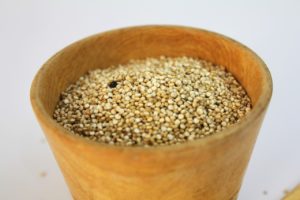 “The ancient indigenous plant is part of a movement to revive native crops and cuisines, and a means of restoring the physical health and economy of their state, one of the poorest in Mexico.” – NPR, the Salt
“The ancient indigenous plant is part of a movement to revive native crops and cuisines, and a means of restoring the physical health and economy of their state, one of the poorest in Mexico.” – NPR, the Salt
DOW Chemicals Asks EPA to Turn the Other Way When it Comes To Toxic Chemicals
“A legal representative for three chemical companies—Dow Chemical, ADAMA, and FMC—has, according to a letter obtained by the Associated Press, petitioned the Trump administration to disregard government research indicating products sold by the companies are unsafe.” – Modern Farmer
The three pesticides addressed by the letter are chlorpyrifos, diazinon, and malathion, members of a category of pesticides widely known as organophosphates. They’re huge in the US; farms use tens of millions of pounds of this stuff to fight worms, beetles, mosquitoes, and other bugs.
It is immensely profitable for these companies, but research is mounting that organophosphates are pretty scary. Studies have indicated that they’re disastrous for kids (associated with intelligence deficits, higher rates of autism, decreased motor skills, and more) and probably toxic to bees.
“Five international judges say Monsanto’s activities have negatively affected individuals, communities and biodiversity, writes Claire Robinson. The Monsanto Tribunal’s damning ruling denounces the company’s harmful impacts on food sovereignty, agricultural production, access to nutrition, the natural environment, seed diversity, climate change, pollution and traditional cultural practices.” – The Ecologist, Monsanto Judges
Take action and visit my page here for more info!

Comments are closed.